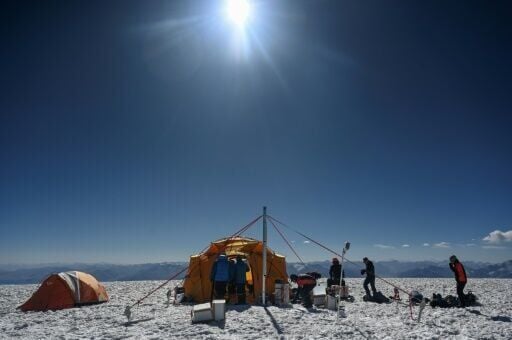In a world where major glaciers from the Alps to Greenland are melting, scientists in Tajikistan are finding a baffling exception—an ice mass that remains stable, or even grows. Their work may offer new insights into how certain regions resist climate shifts, but the question remains: Can it last?
Scientists probe Tajik glacier for clues to climate resistance

Key Takeaways:
- Glaciers are melting globally, from Greenland to the Himalayas.
- One glacier in Tajikistan has defied this trend, remaining stable or even gaining ice.
- Scientists are examining this anomaly to understand climate resilience.
- The glacier’s future remains uncertain amid ongoing global warming.
- These findings could reshape how the global community addresses climate change differences across regions.
The Anomaly in a Warming World
Greenland’s sprawling ice sheets are retreating, the famed Alpine glaciers are losing mass at an alarming rate, and the mighty Himalayas are not far behind. Still, high in a remote region of Tajikistan, researchers have discovered a glacier that is resisting the pattern. Rather than melting and shrinking, it appears to be holding steady—or in some places, perhaps even growing.
Comparisons with Global Glacial Decline
Around the globe, glaciers have become stark symbols of climate change. In Greenland, dramatic melts have raised concerns about sea-level rise. The famed Alpine ice caps, too, are losing their icy expanses at accelerating speeds. Meanwhile, in Asia, Himalayan glaciers are under pressure, affecting water sources for millions of people. Against this backdrop, the irregular behavior of Tajikistan’s glacier stands out all the more.
Scientific Curiosity and Investigation
Scientists studying the glacier aim to pinpoint the factors behind its unexpected resilience. Some are considering how local weather patterns, unique atmospheric conditions, or regional microclimates may play a role. For climate researchers, the hope is that uncovering these dynamics could lead to broader insights into how certain glacier systems survive in rising temperatures.
Questions About the Future
Despite its enigmatic stability, no glacier is immune to the impacts of climate change. Rising global temperatures and shifting precipitation patterns may eventually influence even the most durable ice fields. Researchers are wary of declaring Tajikistan’s glacier a permanent exception; instead, they view it as a timely reminder that climate change operates in different ways across diverse regions.
Why It Matters
What happens in a glacier thousands of miles away can resonate far beyond its frozen peaks. Understanding why some glaciers defy climate trends could improve conservation strategies worldwide. If scientists can uncover the specific conditions that make this glacier more adaptable, such insights might help communities, policymakers, and other researchers develop better ways to handle a warming planet.











